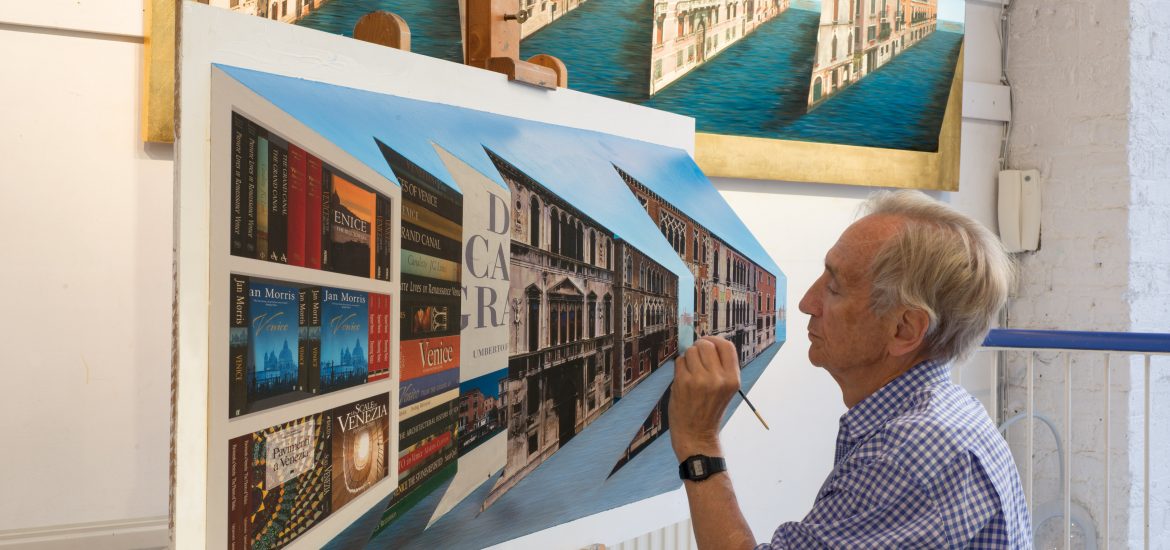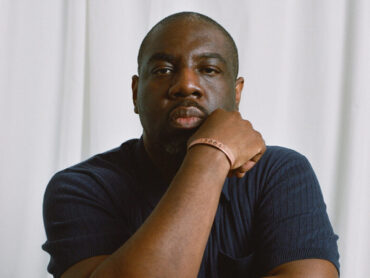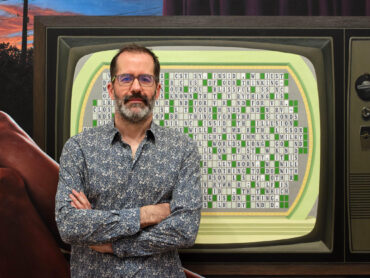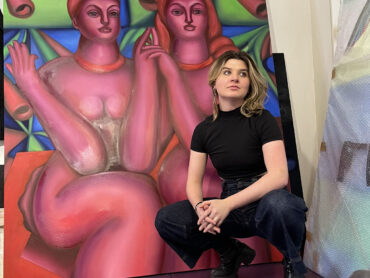Stand out Splendor
Perspective and Retrospective
The Incredible art of Patrick Hughes
by Donnalynn Patakos
Patrick Hughes, and his eye catching art will make one just stop for a few seconds and gaze. A bit muddled, you tilt your head like a puppy, moving left to right, up and down, almost in a rhythmic reverie, you begin to shuffle, a step back and then in again. All one can say to themselves is, “How is this happening?” Transfixed, you are conjured up with a youthful feeling of excitement and a playful warmth. You want to share it and say, “Look at this!!” It’s like hitting a reset button on the monotony of ones day, impeding on the familiar. One of my favorite books growing up is riddled with things we use and are familiar with. How they came to be,wasn’t necessarily what the person was intending. These unforeseen inventions have surprisingly, delightfully, touched us all one way or another, as does Patrick’s work, Retrospective. Upon doing some research, I discovered Mr. Hughes has also written and co-written many books. One on puns and another oxymorons (immediately made him a friend in my head), and I was eager to learn more about his multi dimensional talent. Keen to hear his perspective on paradigms and other topics, considering he has been in the art world for over a half century. Here is what he shared.
Your work is very Paraprosdokian in nature. It doesn’t go as expected. You have written books on puns and oxymorons. With this in mind, would you mind, and is it fair of me to say you have done fairly with this theme, in both written word and art?
P.H.– My perspective, my philosophy, my art is paradoxical. (The paraprosdokian sentence ends surprisingly, but it ends. The paradoxical sentence does not end, but goes round and round in an endless circle). I have researched visual and verbal paradox and oxymoron in my annotated anthology Paradoxymoron, to help me understand how other paradoxers have thought and worked, and so as not to repeat their findings.
The wonderful thing about my Reverspective is that it is a mental idea that when it is made into one of my sculptured paintings it gives rise to the physical perception of paradox. I describe paradox as having three essential qualities: self-reference, contradiction, and vicious circularity. In Reverspective there is self-reference, because the seer sees something that is made as if was already seen. It has contradiction in that out is in, and in is out. It has vicious circularity because the seer sees something that is not there, and thinks it is there, and then it moves to where it is not in a circle of visual and physical mis-apprehension. This reveals three main things: our perceptions are presumptions; our visual perceptions are total, both visual and proprioceptive; and that the rhetoric of the paradox works wonders if is applied thoroughly.
Did you feel any of the pressure to NOT be an artist growing up?
P.H.– When I was growing up the pressure I felt was to grow up in a way I did not want to go. I did not want to be a visual artist as a young person, not until I was nineteen did I start art.
Did you play with your food growing up? Making log cabins our of Celery sticks? Marshes out of Mashed?
P.H.– Although I did draw a skeleton in luminous paint on a chapel wall as a child, and got told off. To me it was a big wall.
What happened to make you place the first piece on the wall in the 60’s?
P.H.-When I made my first reverspective in 1964 I just wanted to make a solid space, a sticking-our room. I made it flat on a table. When I hung it on the wall to my surprise it receded. All the rest of my reverspectives are variations on this deep theme.
How can an emerging artists draw a crowd today, and how do you see it having changed over the years?
P.H. I draw great crowds at art fairs because my work works for all, not just for me. Emerging artists must think not of themselves, as they do, or of their audience, as they do, but of the disciplines of visual rhetoric and composition in its widest sense, to achieve a wide audience.
(Lets talk about the psychology of a successful creative.)
What kind of daily discipline do you think one must exercise to be a success?
P.H.-My intellectual discipline has been life-long reading, poring over every book and magazine, wanting to know more.
Talk to me about traditional education vs doing the work
P.H.– I am a trained teacher, I have taught in schools and art schools. But I have learnt most from M.C.Escher and Rene Magritte who were not teaching me in person, but through books of their pictures, and books about their pictures and how they came to make them. Traditional literature courses are usually limited to one language and even one period, I love Kafka and Ionesco and Morgenstern who are not English or American, but translated.
From your experience, did you learn more from your own reading, or going to a structured institution?
P.H.– So I learnt most from distant teachers in books, although my teachers Muriel Atkinson and John Jones backed me.
What do you enjoy most? The build up before a show, during, or the aftermath?
P.H.– Art openings are awful, they are cocktail parties, with a memory test for the artist of the names of the partners of acquaintances. Before the show is anxiety. After the show is depression.
How do you know when a piece of art is complete?
P.H.– A piece of work is complete when it goes out into the world to be seen, which is the reason for making it. Unseen it does not exist as art, it is only craftsmanship. The art lies in the way it works, there is no art in it when it is idle or on a shelf.
To learn more about Patrick Hughes, go to his website and see for yourself http://www.patrickhughes.co.uk







Comments